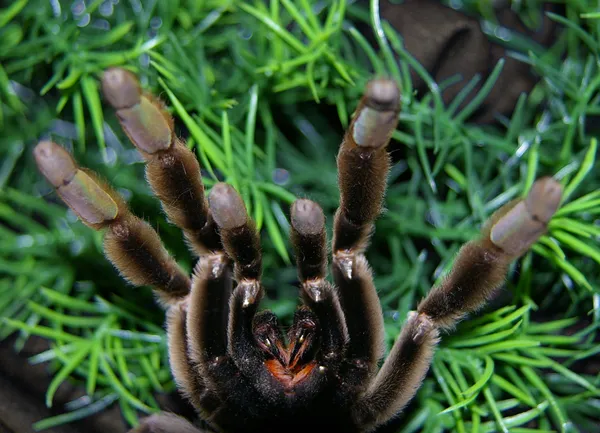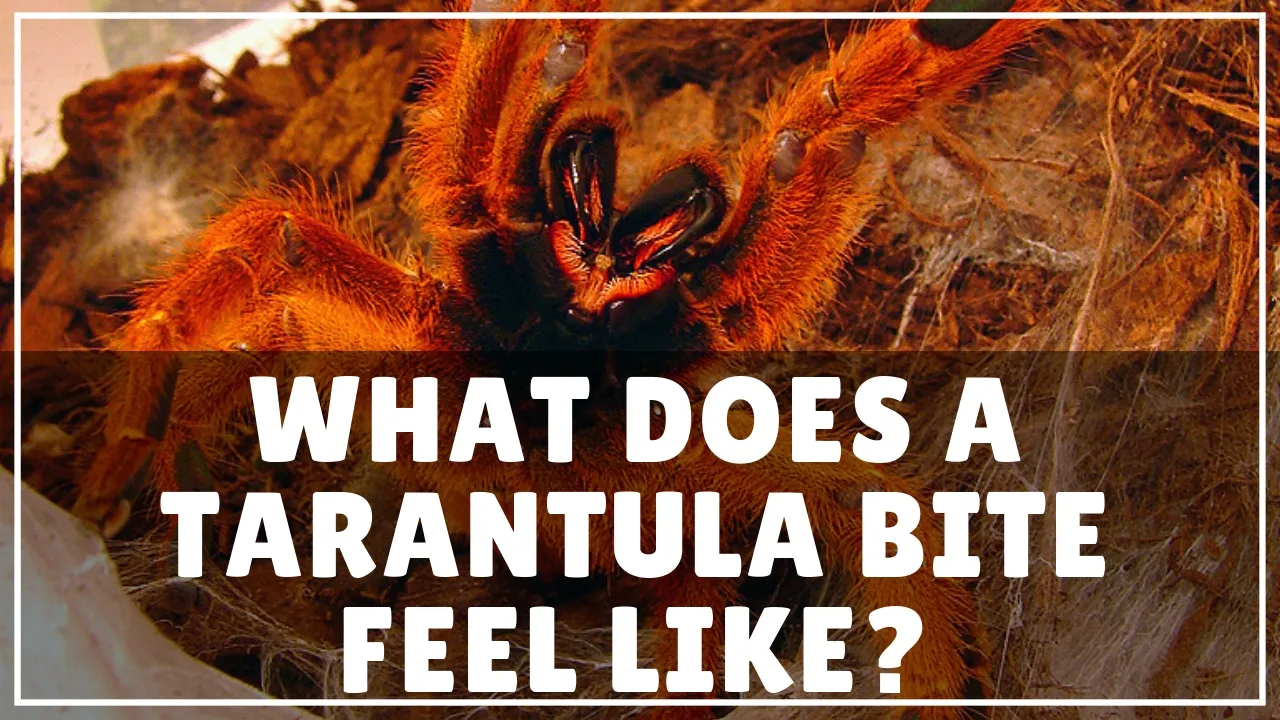What is a Giant Tarantula Bite
A giant tarantula bite can be a concerning experience, and it’s essential to understand what it entails. These large spiders, while not typically lethal to humans, possess fangs capable of delivering venom. The effects of a bite vary depending on the spider species, the amount of venom injected, and the individual’s sensitivity. Generally, a tarantula bite is painful and can cause localized symptoms, but serious complications are rare. However, it’s crucial to treat every bite with respect and take appropriate measures for safety and care. Learning about these fascinating creatures, how they interact with their environment, and the potential consequences of a bite is the first step toward preparedness.
Recognizing a Giant Tarantula Bite
Identifying a giant tarantula bite involves recognizing the signs and symptoms that may appear shortly after the incident. Typically, the bite site will exhibit immediate pain, often described as a sharp, stinging sensation similar to a bee sting. The area around the bite might also develop redness, swelling, and warmth. The presence of two small puncture wounds, which are the entry points of the tarantula’s fangs, is another key indicator. It’s important to note that not every bite will result in visible fang marks. Some people may only experience a mild reaction, while others might display more pronounced symptoms, depending on their sensitivity and the amount of venom injected. Observing and documenting these symptoms is essential for appropriate medical evaluation.
Symptoms of a Giant Tarantula Bite

The symptoms following a giant tarantula bite can vary widely, though several are commonly reported. Localized symptoms, such as pain, redness, swelling, and itching at the bite site, are typical. In more severe cases, the victim might experience muscle cramps, nausea, vomiting, and excessive sweating. In rare instances, more serious systemic reactions may occur, including difficulty breathing or an allergic reaction. These systemic effects usually occur in individuals with pre-existing allergies or sensitivities to insect bites or venoms. The severity of these symptoms will dictate the level of medical attention required. Understanding the range of possible symptoms allows for the appropriate and timely response to a tarantula bite.
Immediate Actions After a Giant Tarantula Bite
When a giant tarantula bites, swift and appropriate action can help minimize the impact and potential complications. The first step is to remain calm. Then, gently wash the bite area with soap and water to remove any lingering venom or debris. Applying a cold compress or ice pack can help to reduce pain, swelling, and inflammation. It’s also crucial to immobilize the affected limb to prevent the spread of venom and avoid any unnecessary movement that could worsen the symptoms. Observe the individual closely for any signs of a severe reaction. The primary goal is to provide initial comfort while preparing for further medical evaluation if needed. A calm response can significantly influence the overall outcome.
First Aid Steps to Take
First aid for a giant tarantula bite involves several key steps. First, thoroughly clean the bite area with soap and water. Apply a cold compress or ice pack to the site to reduce pain and swelling. If the bite is on a limb, keep the limb elevated and immobilized to minimize the spread of venom. Avoid applying a tourniquet, as this can restrict blood flow and cause additional harm. Try to note the appearance of the tarantula, as this information could be helpful for medical professionals. Monitor the victim for any signs of a severe allergic reaction, such as difficulty breathing, hives, or swelling of the face or throat. These initial measures will help to mitigate the immediate effects of the bite while awaiting medical attention if necessary.
When to Seek Medical Attention

Knowing when to seek medical attention after a giant tarantula bite is crucial for ensuring appropriate care. Seek immediate medical help if the victim experiences difficulty breathing, chest pain, severe swelling, or any other signs of an allergic reaction. Medical attention is also warranted if the symptoms worsen over time or if the bite site shows signs of infection, such as increased redness, warmth, or pus. People who are bitten near the eyes or mouth should also seek immediate medical care. It’s always a good idea to consult a healthcare professional if you are unsure about the severity of the bite or if symptoms do not improve with home treatment. Timely medical evaluation can prevent complications and ensure proper treatment.
Treatments for Giant Tarantula Bites
Treatments for giant tarantula bites depend on the severity of the symptoms. Mild cases typically require only supportive care, such as pain relief medication (e.g., ibuprofen or acetaminophen) and antihistamines to alleviate itching and swelling. For more severe reactions, medical professionals might administer corticosteroids to reduce inflammation or epinephrine to counteract an allergic reaction. In some cases, especially if a secondary bacterial infection develops, antibiotics may be prescribed. Treatment plans are individualized based on symptoms, and severity of the reaction and the patient’s medical history. Close monitoring and prompt medical intervention are essential to address the symptoms and prevent complications from a giant tarantula bite.
Common Treatments and Medications
A range of treatments and medications are commonly used for giant tarantula bites. Over-the-counter pain relievers, such as ibuprofen and acetaminophen, can help manage pain and reduce inflammation. Antihistamines, such as diphenhydramine, can alleviate itching and allergic reactions. If there’s a more severe reaction or allergic response, a healthcare provider might administer corticosteroids to reduce inflammation or epinephrine via an auto-injector to treat anaphylaxis. In cases where secondary infections are suspected, antibiotics may be prescribed. Wound care, including cleaning and dressing the bite site, is also essential to promote healing and prevent infections. The specific medications and treatments will be determined based on the individual’s symptoms and overall health.
Pain Management Strategies

Pain management is a critical component of treating a giant tarantula bite. Several strategies can be employed to ease the discomfort and improve the victim’s comfort. Applying a cold compress or ice pack to the bite site can help reduce pain and swelling. Over-the-counter pain relievers, such as ibuprofen or acetaminophen, can effectively manage mild to moderate pain. Elevating the affected limb can also help reduce swelling. In more severe cases, a healthcare professional might prescribe stronger pain relievers. It’s important to follow medical advice and directions for medication use and to monitor for any adverse side effects. Using these strategies, it is possible to lessen the immediate impact of the bite.
Preventing Giant Tarantula Bites
Preventing giant tarantula bites primarily involves adopting safe practices in areas where these spiders are known to reside. Being aware of your surroundings, especially in areas known to be tarantula habitats, is the first step. When hiking or working outdoors, wear long sleeves, long pants, and sturdy shoes to protect your skin. Avoid reaching into dark, enclosed spaces, such as under rocks, logs, or in holes, where tarantulas might be hiding. Regularly inspect your home and outdoor spaces for potential hiding spots and seal any cracks or openings where spiders could enter. Education and awareness are vital in preventing bites and ensuring safety in areas where tarantulas live. Proper planning can help reduce the risk of a bite and minimize any potential harm.
Safety Precautions and Awareness
Practicing safety precautions is essential for reducing the risk of giant tarantula bites. When in areas where tarantulas are present, exercise caution and be vigilant. Always wear protective clothing, including long sleeves, long pants, gloves, and sturdy footwear, to minimize exposed skin. Use a flashlight when walking outdoors at night or in low-light conditions to spot any potential hazards. Be careful when handling wood piles, rocks, or other items that might provide shelter for spiders. Teach children about the potential dangers and the importance of respecting wildlife. Knowing how to identify tarantulas in your area and being aware of their behavior can significantly decrease the chance of an encounter. By maintaining situational awareness and taking proactive measures, you can reduce the likelihood of a bite.
Avoiding Tarantula Habitats

To prevent giant tarantula bites, it’s important to be mindful of their preferred habitats and avoid these areas when possible. Tarantulas commonly live in burrows, under rocks, in leaf litter, and in other sheltered spots, particularly in warm, arid environments. Steer clear of these areas, especially during dusk and nighttime, when tarantulas are most active. When hiking or exploring, stick to well-traveled paths and avoid venturing into dense vegetation or areas with a lot of debris. If you must work or spend time in known tarantula habitats, regularly inspect the area and take appropriate precautions, such as wearing protective clothing. Educating yourself about tarantula habitats in your region will help you avoid potential encounters and stay safe.
